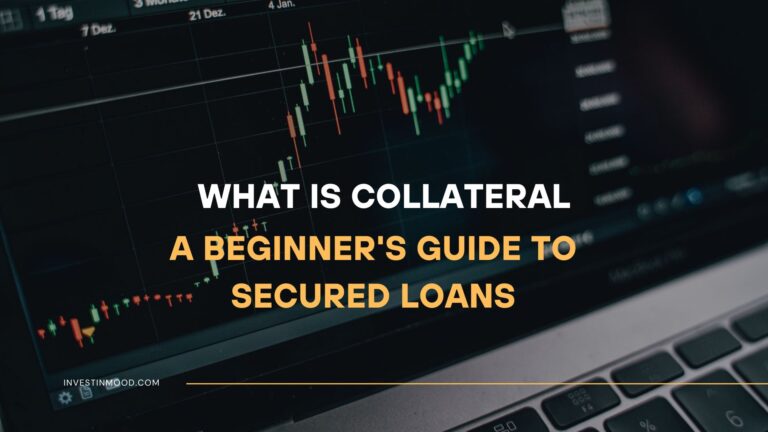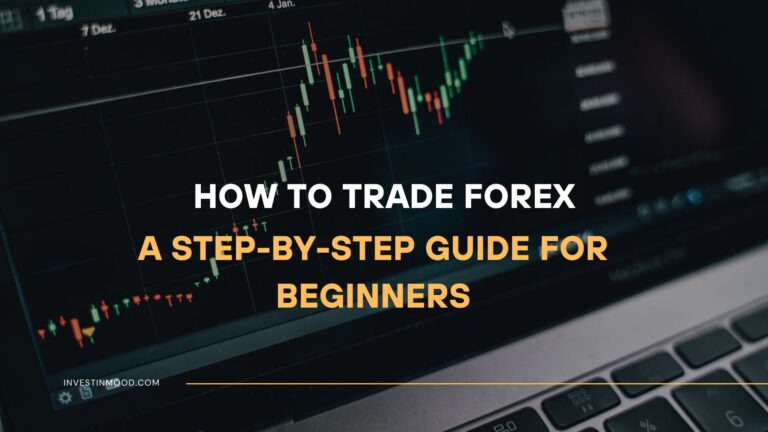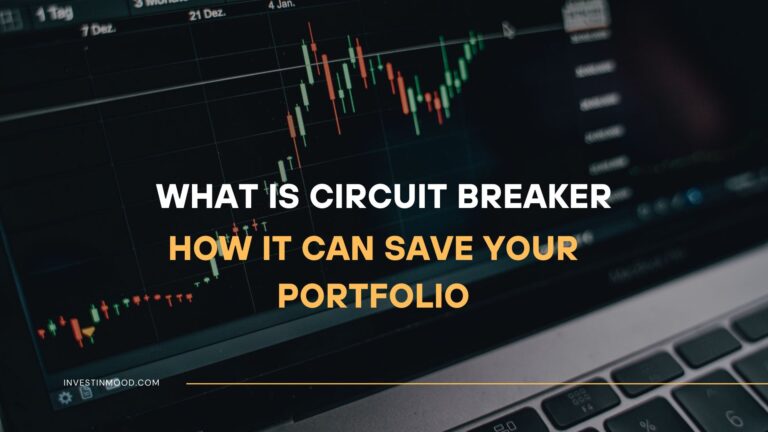
What Is Venture Capital and How It Works for Startups
Venture Capital (VC) is a form of private equity financing provided by firms to high-growth, early-stage startups with the potential for massive returns. It’s the lifeblood of innovation, funding the companies that shape our future, from Silicon Valley tech giants to the next breakthrough in biotech. For ambitious entrepreneurs in the US, UK, and other major economies, understanding VC is crucial for turning a disruptive idea into a global enterprise.
Summary Table
| Aspect | Detail |
|---|---|
| Definition | A type of private equity financing where investors provide capital to high-potential, early-stage companies in exchange for an ownership stake. |
| Also Known As | VC, Risk Capital |
| Main Used In | Startup Financing, Private Equity, Technology & Innovation Sectors |
| Key Takeaway | Venture capital is not a loan; it’s an investment in high-risk, high-reward companies, where investors actively guide the startup towards a lucrative “exit” like an IPO or acquisition. |
| Formula | N/A |
| Related Concepts |
<<<<<<<<<<<<<AD-PLACEMENT>>>>>>>>>>>>>>>>>
What is Venture Capital
Venture Capital is more than just money; it’s a partnership. It’s a subset of private equity where professional investment firms, known as VC firms, raise funds from limited partners (like pension funds, endowments, and wealthy individuals) to invest in privately-held startups that are too risky for traditional banks or public markets. In exchange for their capital, these firms receive an equity stake in the company, betting that the startup will grow exponentially and provide a massive return on investment down the line.
Think of it like this: If a startup is a rocket ship, the entrepreneur is the astronaut and the venture capitalist is Mission Control. They provide the fuel (capital), the guidance (strategic advice and mentorship), and the network (connections to partners and talent) needed to navigate the treacherous journey to orbit (a successful business).
The Core Concept Explained
The core mechanic of venture capital is high risk for potentially high reward. A VC firm knows that the majority of its investments might fail completely. However, the outsized returns from a single, massive success—a “unicorn” like Facebook, Uber, or Airbnb—can cover the losses of all the failed investments and still generate substantial profits for the fund. This is often called the “power law” of venture capital.
VCs are active investors. They often take a seat on the company’s board of directors and work closely with founders to refine strategy, scale operations, and prepare for future funding rounds or an exit event. The entire model is built around a 7-10 year cycle, from initial investment to a “liquidity event” where the stake is sold, typically through an Initial Public Offering (IPO) on a major exchange like the NASDAQ or the acquisition of the company by a larger corporation.
Key Takeaways
<<<<<<<<<<<<<AD-PLACEMENT>>>>>>>>>>>>>>>>>
How The Venture Capital Model Works
While there isn’t a single formula for VC, its structure follows a well-defined process involving key players and funding stages. Understanding this structure is critical for any entrepreneur seeking funding.
The Key Players and Funding Stages
- The Venture Capital Firm: The investment manager (e.g., Sequoia Capital, Andreessen Horowitz, Accel). They raise capital and manage the funds.
- Limited Partners (LPs): The institutions and individuals who provide the capital to the VC fund. They are passive investors.
- The General Partners (GPs): The partners at the VC firm who make the investment decisions and manage the portfolio companies. They also invest their own capital.
- Portfolio Companies: The startups in which the VC fund invests.
Funding is typically deployed in rounds, each with a specific purpose:
- Pre-Seed & Seed Funding: The earliest stage. Used for market research, building a prototype, and assembling a core team. Amounts are relatively small. Angel investors are also active here.
- Series A: For startups with a proven business model that need capital to optimize their product and scale user base.
- Series B and Beyond: For successful companies looking to expand into new markets, acquire other businesses, or scale operations significantly. Later-stage rounds (Series C, D, E+) prepare a company for an IPO.
For a US-based startup, a typical Series A round in 2024 might range from $10 million to $30 million at a valuation between $30 million and $60 million, with top-tier firms on Sand Hill Road or in Silicon Valley leading the round. Similar dynamics apply for startups in London’s “Silicon Roundabout” or Toronto’s growing tech hub.
<<<<<<<<<<<<<AD-PLACEMENT>>>>>>>>>>>>>>>>>
Why Venture Capital Matters
Venture capital is a powerful engine for economic growth and innovation. It provides the necessary risk capital to fund ideas that are too unproven for traditional financing but have the potential to create entirely new industries.
- For Entrepreneurs: VC funding provides the substantial capital required to scale a business rapidly without the burden of debt. It also provides a “seal of approval” that can attract top talent, partners, and future investors. The mentorship from experienced GPs can be the difference between success and failure.
- For Investors (LPs): Venture capital offers the potential for asymmetric returns—the chance to earn multiples on their initial investment, which is not typically possible in public markets. It’s a way to diversify a portfolio into the high-risk, high-reward asset class of innovation.
- For the Economy: VC fuels job creation, technological advancement, and global competitiveness. Many of the world’s most influential companies, from Google and Amazon to Moderna and Tesla, were once VC-backed startups. A robust VC ecosystem is a key indicator of a dynamic and forward-looking economy.
<<<<<<<<<<<<<AD-PLACEMENT>>>>>>>>>>>>>>>>>
How to Secure Venture Capital Funding
Securing VC is a marathon, not a sprint. It requires preparation, persistence, and a compelling story.
Use Case 1: Preparing for the Pitch
Your pitch deck is your most important tool. It must clearly articulate:
- The Problem: What pain point are you solving?
- The Solution: How does your product/service solve it uniquely?
- The Market Size (TAM): Is the total addressable market large enough to generate massive returns?
- The Business Model: How will you make money?
- The Team: Why is your team the right one to execute this vision?
- The Ask: How much money do you need and how will you use it?
Use Case 2: Choosing the Right Investor
Not all money is equal. Target VCs who:
- Specialize in your industry (e.g., SaaS, FinTech, BioTech).
- Invest at your current stage (Seed, Series A, etc.).
- Can add value beyond capital through their network and expertise.
- You have a strong personal rapport with, as this will be a long-term partnership.
Use Case 3: Understanding Term Sheets
A term sheet is a non-binding agreement outlining the terms of the investment. Key terms to understand include:
- Valuation (Pre-money and Post-money)
- Liquidation Preference: Who gets paid first and how much in an exit?
- Board Composition: Who gets a seat on the board?
- Voting Rights: What decisions require investor approval?
<<<<<<<<<<<<<AD-PLACEMENT>>>>>>>>>>>>>>>>>
Beyond the Pitch: What VCs Really Look For
While a great pitch deck is table stakes, venture capitalists are investing in people and potential more than just a business plan. Here are the intangibles they assess:
- Founder-Market Fit: Do the founders have a unique, deep understanding of the problem they’re solving? Is it a personal passion? A team of outsiders trying to disrupt an industry they have no experience in is a hard sell.
- Traction, Not Just Talk: Early evidence of product-market fit is gold. This could be growing monthly recurring revenue (MRR), a high user retention rate, or a long waitlist for your beta. It proves someone is willing to pay for or use your solution.
- A Defensible Moat: What prevents a competitor from copying you? Is it proprietary technology, network effects, exclusive partnerships, or deep domain expertise? VCs need to believe you can build and maintain a competitive advantage.
- The X-Factor: This is the hardest to define. It’s the sheer ambition and conviction of the founders. Can they articulate a visionary future and do they have the grit to endure the inevitable hardships of the startup journey?
- Substantial Capital Provides the large sums of money needed for rapid scaling and to outpace competitors.
- Expert Guidance Access to the experience and strategic insight of successful investors and operators.
- Network Access Introductions to potential customers, partners, key hires, and follow-on investors.
- Credibility A VC’s backing serves as a strong signal to the market, making it easier to attract talent and partners.
- No Debt Repayment The capital doesn’t need to be repaid with interest, preserving cash flow for growth.
- Dilution of Ownership Founders give up a significant portion of their company and future profits.
- Loss of Control VCs often require board seats and veto rights, limiting a founder’s autonomy.
- Pressure for Growth The focus is on hyper-growth to achieve a large exit, sometimes at the cost of sustainability.
- Long & Difficult Process Securing a round can take 6-9 months of full-time effort, distracting from the business.
- Not for All Businesses Only for businesses with the potential to return the entire fund.
<<<<<<<<<<<<<AD-PLACEMENT>>>>>>>>>>>>>>>>>
Alternatives to Venture Capital: Is VC Right for You?
VC is not the only path. Many successful companies are built using other models. Consider these alternatives:
- Bootstrapping: Funding your growth through revenue. You retain full control and ownership but growth may be slower. (Example: Mailchimp).
- Angel Investors: High-net-worth individuals who provide smaller checks than VCs. They can be less formal and offer great mentorship.
- Venture Debt: A loan provided to venture-backed companies by specialized banks. It extends runway without further dilution but must be repaid with interest.
- Revenue-Based Financing (RBF): Investors provide capital in exchange for a percentage of ongoing gross revenues until a pre-determined cap is reached.
- Grants: Non-dilutive funding from government bodies (e.g., SBIR grants in the US) or foundations for specific types of research or innovation.
Choosing the right path depends entirely on your company’s goals, growth rate, and the founder’s appetite for risk and control.
Venture Capital in the Real World: The Uber Case Study
Uber’s journey from a simple app to hail a black car in San Francisco to a global mobility behemoth is a quintessential venture capital success story. Founded in 2009, Uber raised its first seed round of $200,000 from First Round Capital and other angel investors. This capital allowed them to build the initial platform and prove the concept in one city.
The company’s explosive growth was fueled by successive, massive VC rounds:
- Series A ($11M): Led by Benchmark Capital in 2011 to expand across the US.
- Series B ($37M): Led by Menlo Ventures, Jeff Bezos, and Goldman Sachs in 2011.
- Later Rounds (Billions): Over the next decade, Uber raised billions from a global consortium of VCs, including Google Ventures and TPG Growth, to fund its aggressive international expansion and battle competitors like Lyft.
This venture capital was essential for Uber’s “blitzscaling” strategy—prioritizing speed of growth over immediate profitability to establish a dominant market position. The ultimate payoff for these VCs came in 2019 when Uber went public on the NYSE in one of the most anticipated IPOs of the decade, valuing the company at over $82 billion and generating astronomical returns for its early investors.
Conclusion
Ultimately, venture capital is a powerful, high-stakes tool for building category-defining companies. It provides not just the fuel for rapid growth but also the navigational expertise to steer through the challenges of scaling a startup. However, this partnership comes at a cost: significant dilution and a loss of autonomy. As we’ve seen, it’s not a one-size-fits-all solution and is only suitable for businesses targeting massive, disruptive markets. Before seeking VC, honestly assess whether your venture has the potential and the need for this type of rocket fuel. If it does, focus on building a compelling vision, a rock-solid team, and target the right partners who can help you execute it.
Ready to take the next step? A compelling pitch deck is your key to opening doors. To help you get started, we’ve analyzed hundreds of successful raises and created a free template based on the decks that secured millions from top-tier firms.
<<<<<<<<<<<<<AD-PLACEMENT>>>>>>>>>>>>>>>>>
How Venture Capital Relates to Other Concepts
A common point of confusion is the difference between Venture Capital and other forms of private capital like Angel Investing and Private Equity.
| Feature | Venture Capital (VC) | Angel Investing |
|---|---|---|
| Stage of Company | Early-stage (Seed, Series A/B) | Very early (Idea, Pre-seed) |
| Investment Source | Institutional Funds (Pension Funds, Endowments) | High-Net-Worth Individuals |
| Check Size | $2M – $50M+ | $25,000 – $500,000 |
| Role | Active (Board Seats, Mentorship) | Advisor/Mentor |
| Primary Goal | High-growth, “Unicorn” potential | Initial traction & proof-of-concept |
Related Terms
- Angel Investor: An affluent individual who provides capital for a business start-up, usually in exchange for convertible debt or ownership equity. They typically invest before VCs.
- Private Equity: An umbrella term for capital that is not listed on a public exchange. VC is a type of PE, but PE more commonly refers to investments in mature companies (Leveraged Buyouts).
- Initial Public Offering (IPO): The process of offering shares of a private corporation to the public in a new stock issuance, which is the primary “exit” goal for many VCs.
- Pitch Deck: A brief presentation, often created using PowerPoint, Keynote, etc., that provides your audience with a quick overview of your business plan.
- Term Sheet: A non-binding agreement setting forth the basic terms and conditions under which an investment will be made.
Frequently Asked Questions
Recommended Resources
- National Venture Capital Association (NVCA): The premier trade association for the venture capital industry. Great for market data and advocacy news.
- U.S. Securities and Exchange Commission (SEC) – Startup Basics: Essential reading for understanding the legal and regulatory framework of raising capital in the US.
- Y Combinator Library: A fantastic collection of free resources for founders, covering everything from pitch decks to term sheets.
- Paul Graham’s Essays: Foundational writings on startups, VC, and building companies from the co-founder of Y Combinator.





